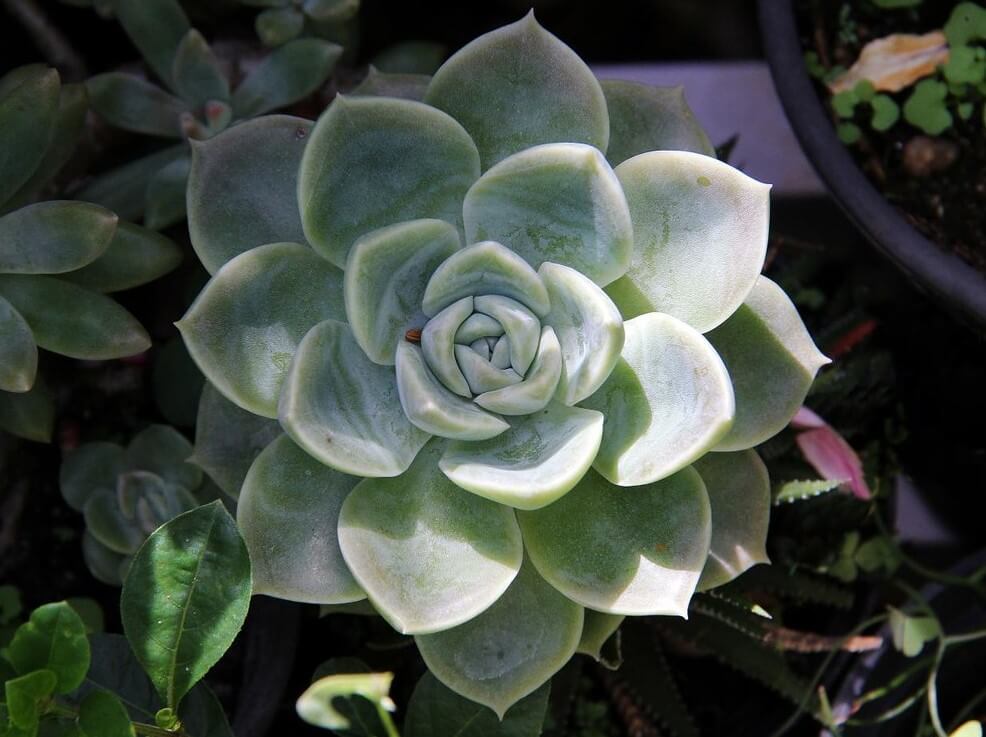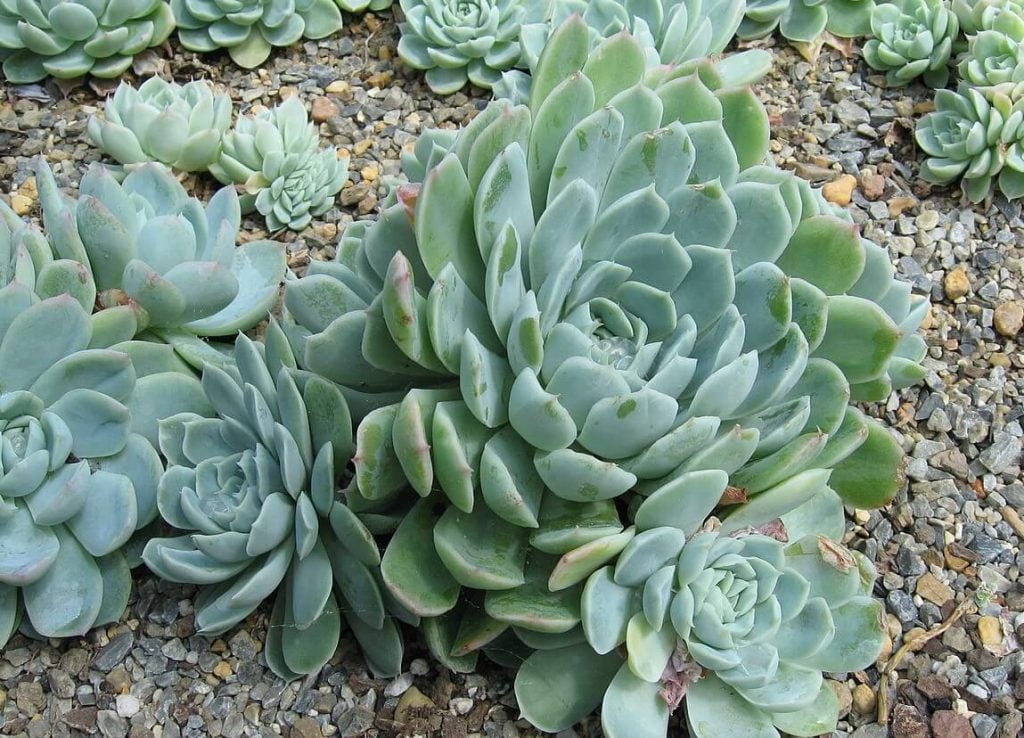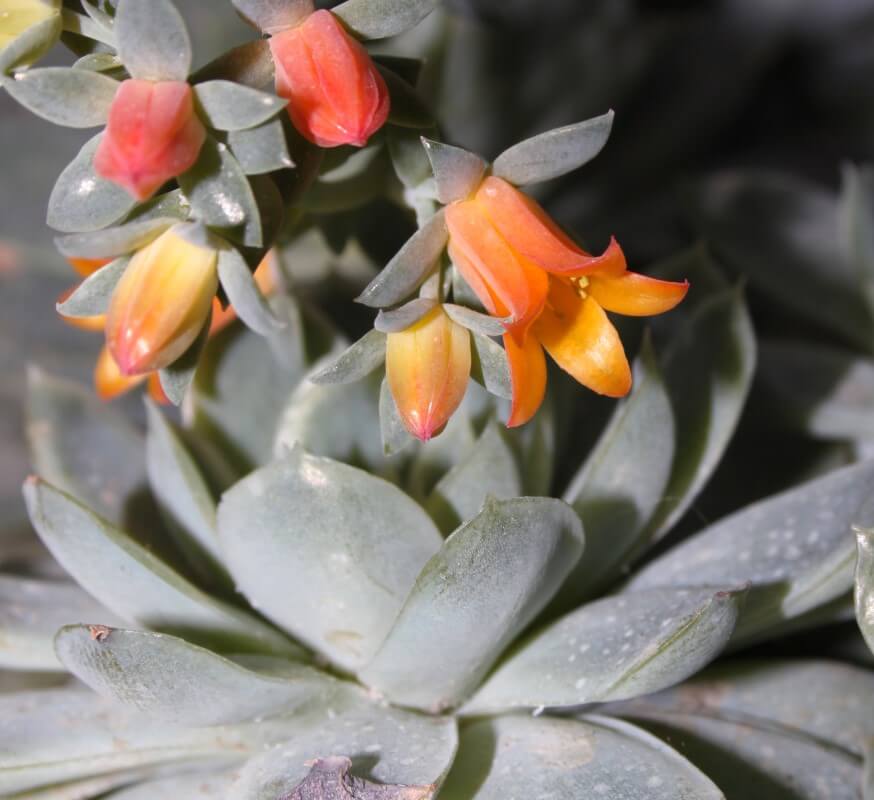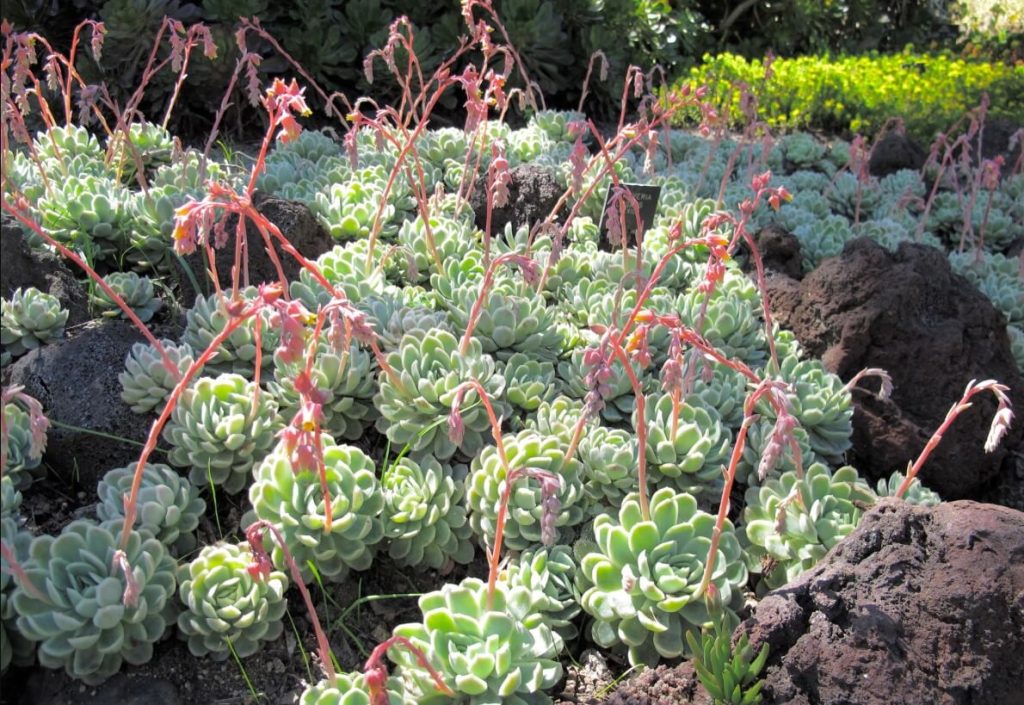Echeveria Elegans, also known as Mexican Snowball, is one of the most popular and beloved succulents grown around the world.
People really want this pretty plant because it grows in a circle and has unique blue-green leaves.
In the wild, Echeveria Elegans is native to the semi-desert regions of Mexico. It thrives in arid conditions and rocky outcrops across various states including Hidalgo, Puebla, and Oaxaca. The species name “elegans” refers to the plant’s graceful and refined appearance.
Echeveria Elegans is a popular succulent houseplant that you can easily find at nurseries and garden centers. Its compact size makes it suitable for containers and windowsills. The Mexican Snowball plant can also be incorporated into stunning outdoor succulent gardens.
This article provides a comprehensive guide to growing and caring for Echeveria Elegans.
Key topics covered include:
Ideal growing conditions
Soil, sunlight, and water requirements
Tips for fertilization and pruning
Propagation techniques
Repotting advice
Troubleshooting common problems
Creative ways to display these elegant succulents
Whether you’re new to the world of succulents or a seasoned grower, Echeveria Elegans is sure to be a delightful addition to your plant collection. Let’s explore how to cultivate these rosette-forming beauties!
Growing Conditions for Echeveria Elegans

In the wild, Echeveria Elegans is accustomed to arid environments with rocky soils and bright sunlight. Replicating these natural growing conditions is key to helping the plants thrive.
Light Requirements
Echeveria Elegans requires abundant sunlight to maintain its tight rosette structure and vivid coloring. Provide at least 6 hours of direct sunlight daily. An ideal location is a south or west facing windowsill.
Too little light will cause the leaves to become elongated and pale. The plant can tolerate partial shade, but its growth will slow. Carefully acclimate the plant if moving it from indoor to outdoor sunlight.
Want to learn about Sedum Spectabile plant care guide? Just read these article and mastering it now!
Soil Needs
A fast draining potting mix is critical for healthy roots and to prevent rot. A cactus/succulent soil blend or a mix of 60% potting soil and 40% perlite/coarse sand works well. The soil pH should be slightly acidic, around 6.0 to 6.5.
Allow the soil to fully dry out between waterings. Add gravel, pebbles or sand to improve drainage for potted plants.
Temperature and Humidity
Echeveria Elegans does well in rooms that are around 65-75°F. It can handle short periods of colder weather down to 30°F. Don’t let it get too humid, as that could cause it to rot. Provide good air circulation.
Watering Requirements
Water deeply, then allow the soil to completely dry before watering again. This may mean watering every 2-3 weeks. The fleshy leaves will show signs of wrinkling when thirsty. Overwatering is the main cause of problems.
Caring for Echeveria Elegans

With the right growing conditions and proper care, Echeveria Elegans will reward you with stunning rosettes. Here are some tips for keeping these succulents healthy and looking their best:
Fertilizing
Use a balanced liquid fertilizer diluted to half strength every 2-3 months during spring and summer. This provides an occasional nutritional boost. Avoid over-fertilizing which can damage roots.
Pruning
Remove spent flower stalks and any dead or damaged leaves to keep the plant looking tidy. Pruning also encourages denser growth. Use clean, sterilized scissors or garden shears.
Pest Prevention
Mealybugs, aphids and scale insects may appear. Isolate any infected plants. Use horticultural oil or insecticidal soap sprays to remove pests. Ensure good air circulation.
Propagation
Propagate new Echeveria Elegans plants from offsets, leaf cuttings or stem cuttings. Offsets can be gently removed and repotted when they reach 2-3 inches tall.
Repotting
Repot every 2-3 years in spring using fresh potting mix. Choose a pot only 1 size larger to avoid overpotting. Trim any dead roots before repotting.
How to Propagate Echeveria Elegans

One of the easiest ways to multiply your Echeveria Elegans collection is through propagation. This succulent propagates readily from leaves, offsets and stem cuttings.
Propagating from Leaves
Here’s how to propagate from leaves:
Select a healthy leaf and gently twist it off the stem.
Allow the leaf to dry out for a few days until the cut end calluses over.
Place the leaf on moist potting mix with the calloused end just touching the soil.
Roots and a new rosette will begin forming in a few weeks.
Propagating from Offsets
Echeveria Elegans produces offsets or “pups” on short stems around the base of the mother plant. Carefully detach these offsets when they reach 2-3 inches tall and repot them.
Propagating from Stem Cuttings
Take 3-4 inch stem cuttings in spring or summer. Allow the cut ends to callous then plant in soil. New roots will emerge soon.
Troubleshooting Common Echeveria Elegans Problems
While Echeveria Elegans is relatively easy to care for, some issues can arise. Here are some common problems and how to fix them:
Overwatering
Excess moisture leads to rotting stems and leaves. Allow soil to dry out thoroughly between waterings.
Sunburn
If leaves turn red, brown or yellow, the plant is getting too much direct sun. Move it to partial shade.
Leggy growth
Insufficient sunlight causes the succulent to stretch out. Provide at least 6 hours of sun per day.
Root rot
Overwatering causes roots to rot. Improve drainage and water less frequently.
Pests
Treat mealybugs, mites and scale with horticultural oils. Remove badly damaged leaves.
Creative Ways to Display Echeveria Elegans
The compact rosettes of Echeveria Elegans make them perfect for containers and accent plants. Here are some fun ways to showcase these succulents:
Create a mixed succulent container garden with various textures and colors. Echeveria Elegans provides nice contrast.
Plant in hanging baskets or vertical wall planters. The trailing stems look lovely cascading over edges.
Tuck into rock gardens, fairy gardens, terrariums or dish gardens. Combine with moss and decorations.
Group together for a fuller, dense appearance on windowsills or in centerpieces.
Highlight the colors by pairing with decorative rocks, sand or gravel.
Growing Echeveria Elegans in Outdoor Landscapes
In frost-free climates, Echeveria Elegans can be incorporated into outdoor succulent gardens. Here are some design ideas:
Plant as a vibrant groundcover. Space plants 12 inches apart for a dense mat.
Surround with gravel or crushed granite to highlight the rosettes.
Include in xeriscape rock gardens and hellstrips. Combine with agaves and sedums.
Place in raised beds, container gardens, or rock retaining walls. Excellent for slopes.
Mass together in clusters or rows for visual impact.
Use as a living, low maintenance lawn substitute.
Common Varieties of Echeveria Elegans
There are several notable cultivars of Echeveria Elegans to choose from:
‘White Cloud’ – Compact rosettes with rounded powdery leaves
‘Ruby Slippers’- Deep red leaf tips when exposed to ample sunlight
‘Blue Curls’ – Ruffled leaves with bluish overtones
‘Lilac Mist’ – Soft lilac and pink tones on leaves
‘Morning Light’ – Green leaves with white edges
Notable Cultivars of Echeveria Elegans
Echeveria Elegans is a highly variable succulent species with over a dozen named cultivars. Here are some of the most popular and widely available varieties:
‘White Cloud’
Forms tight rosettes of rounded, powdery blue-gray leaves
Leaves have a distinctive frosted or velvety appearance
Remains more compact compared to the species
Grows up to 5 inches wide
‘Ruby Slippers’
Develops deep ruby-red leaf tips when exposed to ample sunlight
Inner leaves remain blue-green in color
Striking color contrast on mature plants
Can reach 8 inches wide
‘Blue Curls’
Spoon-shaped leaves have ruffled edges that curl downward
Distinctive bluish overtones on leaves
Forms rosettes up to 6 inches wide
Less prone to reabsorbing lower leaves
‘Lilac Mist’
Young leaves emerge with soft lilac and pink hues
Matures to blue-green leaves with pink margins
Flowers are vibrant pink
Grows rosettes up to 5 inches wide
‘Morning Light’
Green leaves are edged in white
Gives the impression of being dusted with frost
Retains compact growth around 4 inches wide
There are also some notable hybrids involving Echeveria Elegans such as ‘Blue Atoll’, ‘Blue Prince’, and ‘Afterglow’. With so many varieties, it’s easy to find one that fits your style and growing conditions.
Final Thoughts on Growing Echeveria Elegans
Echeveria Elegans is a popular succulent because of its beautiful colors, unique shapes, and low maintenance. This elegant plant can be grown successfully indoors and outdoors with proper sunlight, soil drainage and minimal watering.
Propagate new plants from leaves, offsets and cuttings to expand your collection. Show off the compact rosettes in containers, vertical gardens, rockeries or xeriscape landscapes. Just be sure to avoid overwatering this drought-tolerant succulent.
The Mexican Snowball truly lives up to its name as a graceful, refined addition to both home and garden. If you’re looking for a charming succulent that’s simple to grow, Echeveria Elegans is sure to impress.

